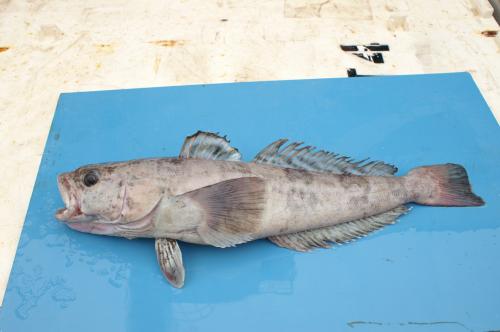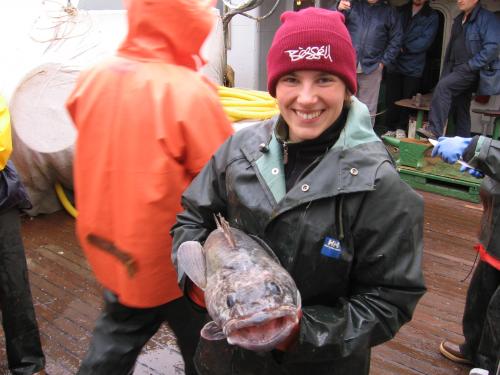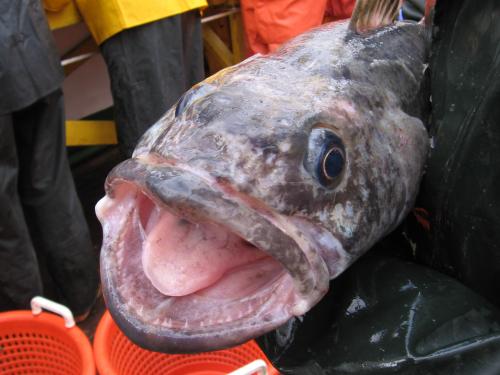The Most Remote Fishery on Earth
SOUTHERN OCEAN– Antarctic fish are a strange and fascinating breed, drawing scientists from all over the world to study their unique polar adaptations. Many Antarctic fish have proteins in their blood that possess antifreeze properties, allowing them to survive in the freezing waters of the Southern Ocean. Species in the Icefish family lack hemoglobin, a strange adaptation that gives them clear blood, lending to their family name. And many fish lack swim bladders, instead controlling buoyancy through lipids (or fats) and weakly calcified skeletons. Few people would have seen the potential for harvesting these bizarre fish.
In the late 1960s fisherman began trawling around the sub-Antarctica islands, mostly for Notothenia rossi (the marbled rock cod) and some species of Icefish. Catches rose steadily, and by 1990, the marbled rock cod population was reduced to 5% of its pre-exploitation level. As shallow water species became depleted, fishermen began targeting the large deep-water Patagonian toothfish, finding a temporary goldmine. But legal commercial fishermen weren’t the only ones interested; pirate fishermen also wanted their share. Within ten years local population declines and stock closures ensued. Consequently, fishing boats pushed into the southernmost reaches of the Antarctic waters in pursuit of the Patagonian toothfish’s cousin species, the Antarctic toothfish. Toothfish are more commonly known by their snazzy market name “Chilean Seabass.” And they are an incredibly expensive and gourmet fish – prices are well over $20 per pound – which is the main reason why the fishery plunders on, despite stock depletions and the potential vulnerability of these fish.
Why would people go all the way to Antarctica to fish? Indeed, it makes little sense to use so much gas, time and energy traveling to the most remote corner of the globe in pursuit of fish. But our fisheries closest to home have been highly exploited and can no longer meet the needs of a growing world population. Current Food and Agricultural Organization (FAO) statistics regarding world fisheries show that 38% are fully exploited, 28% are overfished, and 29% are collapsed. That leaves only 3% of our world fisheries unexplored, including some stocks of Antarctic toothfish. Fishermen are forced to voyage into deeper and more remote waters to keep up with world demands and continue fishing, with or without a license to do so.
The problem with deep-sea fisheries
Last year I attended a symposium on deep-sea fisheries at the AAAS meeting in San Francisco. I listened in earnest, scribbling down notes as all the fishery biologists on the panel – including world renowned fishery experts like Daniel Pauly – stood up and talked about the vulnerability of deep-sea fisheries. Deepwater fish tend to grow slowly, live a long time, mature later in life and have low fecundity (reproductive capability.) The symposium led to a clear conclusion: deep-sea fisheries are not resilient to heavy commercial exploitation. In the past we realized this too late, after the deepwater fishes had been over-harvested.

While Antarctic toothfish can live to be over 200 pounds, they are usually caught at quite a young age.
Photo by Sunhild Wilhelm
Toothfish fall into the category of relatively slow-growing and long-lived fish — 50 years for the Patagonian species and about 40 for the Antarctic species. They don’t mature until about 10 years of age and are caught well before that time, one of the reasons we have yet to understand their reproduction and fecundity. While the Patagonian toothfish has already been overexploited in some areas, the fishery for Antarctic toothfish is still relatively new, though it is growing and will continue to do so. Given the trends of Antarctic and deep-sea fisheries, the chances that toothfish could withstand heavy fishing pressure seem slight. Toothfish are the largest fish in the southern ocean, and decimating their population could be damaging to the whole Antarctic ecosystem.
Will we learn from the past quickly enough to keep the Antarctic toothfish from becoming another over-fished FAO statistic? My job as a fisheries biologist is to provide life history information on the species. The managers’ job is to use that information to implement sustainable management. And your job as a consumer is to make the best choices about where the fish you eat come from. Being out here in the Southern Ocean, the question I can’t shake from my mind is: Do we really have any business commercially harvesting fish that come all the way from Antarctica?
For more on Antarctic fish, check out the BBC’s recent article on the Antarctic toothfish by clicking here.












Hi Cassandra…
hope you are having a good cruise…
good luck and good fishing!
Vic
Hi Cassandra,
What a great post! It summarizes the background for your work very well, and it’s very engaging. I did posts and other updates on this website during our field work as well, and it’s great to see what different people are putting together for the site! I’m a grad student just around the corner from you (in Santa Cruz), and it’s exciting to hear what different kinds of scientists are doing in Antarctica. Good luck on the rest of the field season!
Cheers,
Nadine
Dear Vic, the cruise was great despite lots of bad weather! Maybe see you next year for the AMLR 2009 fish cruise? Very best wishes.
Cassandra
Dear Nadine,
Thanks for your kind comments on my dispatch. I also enjoy reading what others are doing and how they live in Antarctica, including your story on the toilet tent! Hope you are enjoying the comforts of being back home. I wish you the best of luck in your work. Its amazing to me that we can be doing work in Antarctica from Santa Cruz… We should share pics and stories.
Best wishes,
Cassandra
DEAR CASSANDRA,
HELLO FROM THE PHILIPPINES!!!!!!!!!HOW I WISH TO SEE THE PLACE YOUR POSE IS GREAT MY MOM IS A AQUACULTURIST AND I LOVE TO KNOW ABOUT THE FISH IF EVER YOU VISIT MY COUNTRY CALL ME OR JUST SEND ME EMAILS I WILL TOUR YOU AROUND MY PLACE IS SURROUNDED BY WATER AND HAS A LOTS OF BEACHES HERE TOO LOVE TO HEAR FROM YOU SOON…….ITS ME NAICY
Hi Naicy!
Thanks for your enthusiastic email! I would love to hear more about the work that your mom does and to chat with you! I would also be more than happy to tell you more about the toothfish!
Best,
Cassandra
I read your blog about the Toothfish and found it very interesting. For an oceanography project in school i am doing a report on your exibition and would like to know: A) If the Protien found in the fish can be replicated scientifically in the lab? and B) if the protien can be placed and thrive in the human body for cold resistance?
thank you for the help
Hi Avi,
Thanks for your interest in the blog! Sounds like you have a very interesting report you are doing and I will do my best to answer your questions.
The antifreeze proteins found in Antarctic fish can be cloned in the lab, so in that sense, yes they can be replicated scientifically. I do not know if it could be placed in the human body for cold resistance, I think that would be a very complicated thing since we aren’t in other ways adapted to freezing temperatures. However, people are currently doing research to see if they can use these proteins to prevent plants (crops) from freezing and for the potential preservation of tissues and organs. See the link I found on the NSF website for some good information (http://www.nsf.gov/pubs/1996/nstc96rp/sb3.htm). This report is from 1996, so they have likely more recent research you can look up for how fish antifreeze proteins are being used. If you do a quick google search on fish antifreeze proteins or uses for fish antifreeze proteins you should find some later stuff. Also, check out this PDF I found on the use of fish antifreeze proteins in ice cream (http://www.themilkweed.com/Feature_06_Dec_1.pdf)! And wikipedia also has a whole page on this topic (http://en.wikipedia.org/wiki/Antifreeze_protein). Good luck and enjoy and let me know if you need more help or have questions! Best of luck with your project!
-Cassandra
[...] saber mais sobre a merluza, clique aqui e leia algumas informações da pesquisadora norte-americana Cassandra Brooks que estuda a vida [...]
Hi Cassandra,
I found your project to be very interesting. It fascinates me that there is life in such freezing temperatures of waters. I was wondering if you could explain how you go about conducting research on these fish since they need the subfreezing temperature of water to survive? Do you have water set at a certain temperature to keep them alive while they are out of the ocean? Thank you so much I hope to hear from you soon!
Best of luck,
Arpine Bandaryan
Hi Arpine,
This is a very good question. To my knowledge, anyone who does research on live Antarctic toothfish conducts their work in Antarctica and keeps the fish in tanks with water from the nearby frigid ocean environment.
In my research, I used otoliths (fish ear bones) to estimate their age and growth and the majority of my work was conducted in laboratory. The otoliths were collected by fisheries observers who go out on fishing boats and collect biological data.
I hope that answers your questions!
Cassandra
Admiring the time and effort you put into your blog and detailed information you offer! I will bookmark your blog and have my friends also check up here often. Thumbs up!